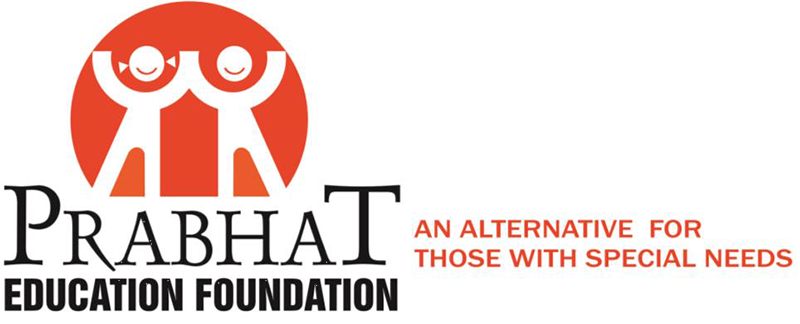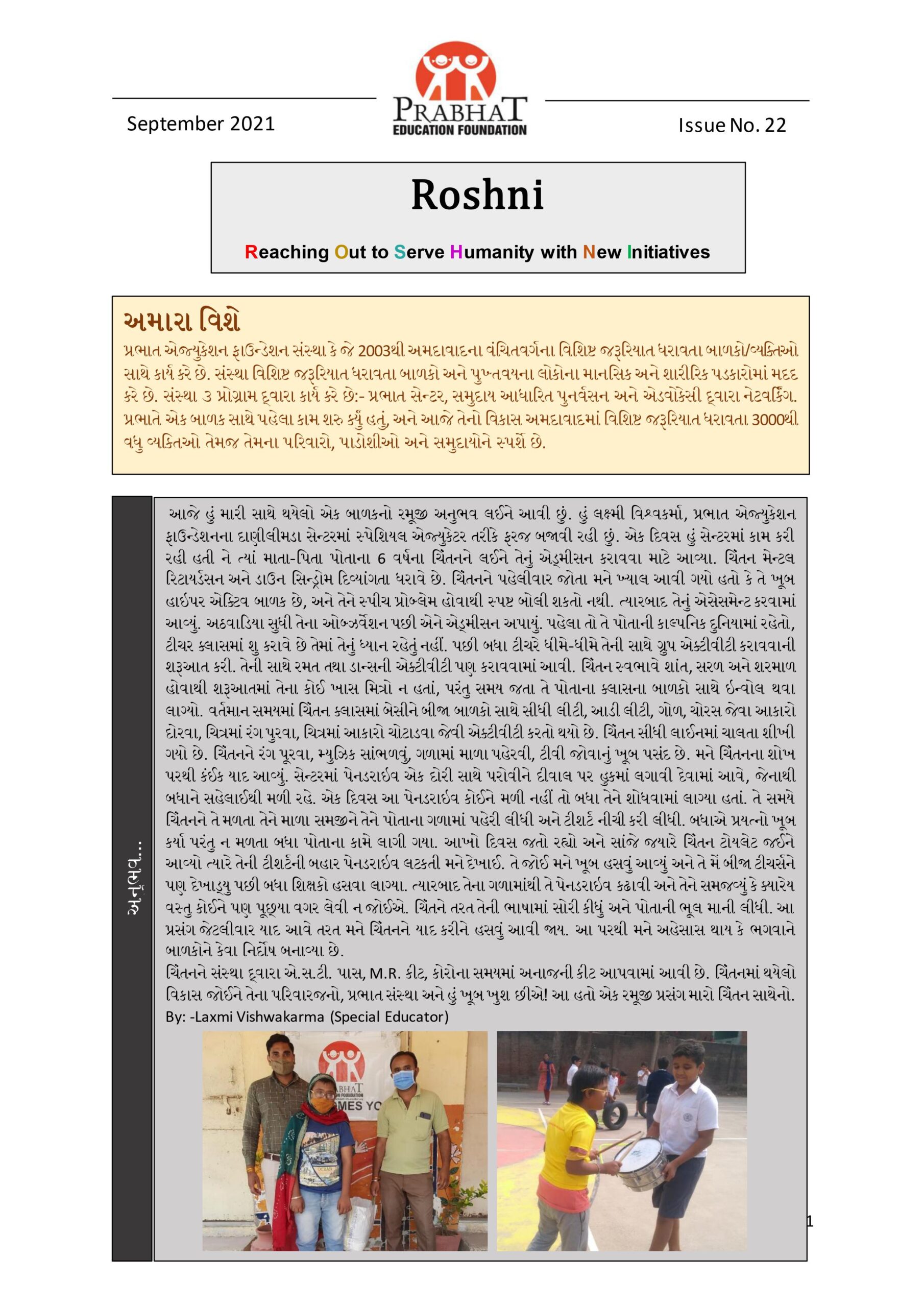How To Build Your Own Chatbot Using Deep Learning by Amila Viraj
Choose a partner that has access to a demographically and geographically diverse team to handle data collection and annotation. The more diverse your training data, the better and more balanced your results will be. Before training your AI-enabled chatbot, you will first need to decide what specific business problems you want it to solve. For example, do you need it to improve your resolution time for customer service, or do you need it to increase engagement on your website?
It might be able to be a really good assistant for you. I think it’s back to normal, but it did appear that ChatGPT, for a night, just went crazy. My favorite response was, there was a user who was talking with ChatGPT, and it said, Are you having a stroke?
It’s useful from users and from experimental releases. Like with 1.5 now, Pro, it’s in experimental release so we can get early feedback. We’re being incredibly responsible, I think, and thoughtful about the way we’re deploying these technologies and how we’re building it. And hopefully, you can see that in the approach we’ve taken. I mean, you’re already seeing price of tokens is going down, you know, discounted every day, it seems.
With the digital consumer’s growing demand for quick and on-demand services, chatbots are becoming a must-have technology for businesses. In fact, it is predicted that consumer retail spend via chatbots worldwide will reach $142 billion in 2024—a whopping increase from just $2.8 billion in 2019. This calls for a need for smarter chatbots to better cater to customers’ growing complex needs. On the other hand, Knowledge bases are a more structured form of data that is primarily used for reference purposes. It is full of facts and domain-level knowledge that can be used by chatbots for properly responding to the customer.
Dataset for training multilingual bots
So we got to double down on that method and trust that method. Because if they did, I think cautious optimism is the right — is the only reasonable approach, I would say. So you go out there, and you study, and you sort of try to take apart and deconstruct what’s going on. But with an engineering science, the difference is, you have to create the artifact worthy of study first, and then you can deconstruct it. So it’s definitely worth debating, and it’s worth researching really carefully.
- The amount of data essential to train a chatbot can vary based on the complexity, NLP capabilities, and data diversity.
- The strategy here is to define different intents and make training samples for those intents and train your chatbot model with those training sample data as model training data (X) and intents as model training categories (Y).
- And if you’re curious about how he got into artificial general intelligence, our friend, Ezra Klein, did a great podcast on the subject with Demis last year.
- It requires a lot of data (or dataset) for training machine-learning models of a chatbot and make them more intelligent and conversational.
- In the captivating world of Artificial Intelligence (AI), chatbots have emerged as charming conversationalists, simplifying interactions with users.
After obtaining a better idea of your goals, you will need to define the scope of your chatbot training project. If you are training a multilingual chatbot, for instance, it is important to identify the number of languages it needs to process. In order to quickly resolve user requests without human intervention, chatbots need to take in a ton of real-world conversational training data samples. Without this data, you will not be able to develop your chatbot effectively. This is why you will need to consider all the relevant information you will need to source from—whether it is from existing databases (e.g., open source data) or from proprietary resources.
A growing body of evidence suggests you can get better results if you give AI some friendly encouragement, but a new study pushes that strange reality further. Research from the software company VMware shows chatbots perform better on math questions when you tell models to pretend they’re on Star Trek. With over a decade of outsourcing expertise, TaskUs is the preferred partner for human capital and process expertise for chatbot training data.
Part 7. Understanding of NLP and Machine Learning
QASC is a question-and-answer data set that focuses on sentence composition. It consists of 9,980 8-channel multiple-choice questions on elementary school science (8,134 train, 926 dev, 920 test), and is accompanied by a corpus of 17M sentences. Look, it’s a very interesting question, I think, a live, ongoing debate in the whole industry, in the field. And I’m guessing that is what will actually, ultimately happen. Because the problem with the general one is you can’t satisfy all constraints, right?
That would have needed a kind of bespoke AI, handcrafted AI. And so that — effectively, there would have been two different types of things you would have to do. To do AI for products, actually, the best way to do that now is to use the general AI techniques and systems. Because they’ve got to a level of sophistication and capability where they’re actually better now than doing any special-case type of hard-coded type of approach. Because it’s general purpose, once you put it out there, bad actors can potentially repurpose it for harmful ends. But of course, once you open-source something, you have no real recourse to pull it back anymore, right?

But there’s also this big engineering track now of scaling and exploiting known techniques and pushing them to the limit. And there’s incredibly creative engineering at scale that has to be done there, all the way from the bare metal hardware work, up to the data center size and the efficiencies of all of that. I think in the last two or three years, it’s become clear what some of the main components are going to be.
How To Monitor Machine Learning Model…
You can download this Relational Strategies in Customer Service air jordan 4 retro red thunder (RSiCS) dataset from this link. This collection of data includes questions and their answers from the Text REtrieval Conference (TREC) QA tracks. These questions are of different types and need to find small bits of information in texts to answer them. You can try this dataset to train chatbots that can answer questions based on web documents. With more than 100,000 question-answer pairs on more than 500 articles, SQuAD is significantly larger than previous reading comprehension datasets. SQuAD2.0 combines the 100,000 questions from SQuAD1.1 with more than 50,000 new unanswered questions written in a contradictory manner by crowd workers to look like answered questions.
RecipeQA is a set of data for multimodal understanding of recipes. It consists of more than 36,000 pairs of automatically generated questions and answers from approximately 20,000 unique recipes with step-by-step instructions and images. Look, I think there’s several sort of nuanced answers to that, right?
The AI models were no better on even more basic questions. Asked to identify polling sites in specific ZIP codes, they frequently provided inaccurate and out-of-date addresses. Asked about procedures for registering to vote, they often provided false and misleading instructions.
Custom Chatbot Builders – Trend Hunter
Custom Chatbot Builders.
Posted: Mon, 10 Jul 2023 07:00:00 GMT [source]
And I think we’re still quite a long way off of that, actually, with the current systems. There’s a lot of things — all of us who’ve interacted with it can see all the flaws in the systems. Even though they’re impressive in many ways, they’re also not very good, in many ways, still. And as I said earlier, a lot of breakthroughs still needed. I think I don’t know what to make, necessarily, of those kinds of polls.
And eventually, they sold DeepMind to Google for $650 million in 2014. And for much of the next decade, they kind of existed as this quasi-elite research team within Google’s AI division. I would consider him one of the four or five most important people in the entire field of AI.
Can they keep up with the latest literature as well and the cutting edge of research? A sort of science assistant or medical assistant tool could help them do that while they’re treating patients 24/7. So I just feel like there’s a lot of things like that. Perhaps they’re being undervalued today in our capitalist society. So for a lot of everyday use cases, that might be already plenty good enough for a particular product or an application or so on. And I think the developer community is going to create amazing things with these models.
Search code, repositories, users, issues, pull requests…
Next, we vectorize our text data corpus by using the “Tokenizer” class and it allows us to limit our vocabulary size up to some defined number. When we use this class for the text pre-processing task, by default all punctuations will be removed, turning the texts into space nike air monarch black jcpenney sale today price-separated sequences of words, and these sequences are then split into lists of tokens. We can also add “oov_token” which is a value for “out of token” to deal with out of vocabulary words(tokens) at inference time. The variable “training_sentences” holds all the training data (which are the sample messages in each intent category) and the “training_labels” variable holds all the target labels correspond to each training data.
The communication between the customer and staff, the solutions that are given by the customer support staff and the queries. The primary goal for any chatbot is to provide an answer to the user-requested prompt. The data in the dataset can vary hugely in complexity. Also, you can integrate your trained chatbot model with any other chat application in order to make it more effective to deal with real world users. We are going to implement a chat function to engage with a real user.
Because we have multiple teams each working at different timescales, sort of cycling with each other. And I hope this is sort of the new normal for us, really, is shipping at this high velocity, of course whilst still being very responsible and keeping safety in mind. Developers can use its code completion, advanced code summarization, code snippets retrieval, and other capabilities to accelerate innovation and improve productivity. This allowed the client to provide its customers better, more helpful information through the improved virtual assistant, resulting in better customer experiences. Once you are able to identify what problem you are solving through the chatbot, you will be able to know all the use cases that are related to your business.
You can use this dataset to make your chatbot creative and diverse language conversation. You can foun additiona information about ai customer service and artificial intelligence and NLP. This dataset contains manually curated QA datasets from Yahoo’s Yahoo Answers platform. It covers various topics, such as health, education, travel, entertainment, etc. You can also use this dataset to train a chatbot for a specific domain you are working on.
And that’s why you’re seeing things like 1.5 coming, you know, so hot on the heels of 1.0. And so we’re going to talk about Gemini and some of the research that went into it and what makes it different than or similar to other AI products on the market. But anyways, you know, Demis has a fascinating backstory.
A study attempting to fine-tune prompts fed into a chatbot model found that, in one instance, asking it to speak as if it were on Star Trek dramatically improved its ability to solve grade-school-level math problems. However, the chatbot APIs are currently available to developers so that they can integrate these chatbots and their answers into existing websites across the internet. In total, the researchers determined that 51% of the answers provided by chatbots were inaccurate; 40% were harmful; 38% included incomplete information; and 13% were biased. The researchers identified significant differences in accuracy between the various chatbots, but even Open AI’s GPT-4, which provided the most accurate information, was still incorrect in about one-fifth of its answers. Texas, along with 20 other states, has strict rules prohibiting voters from wearing campaign-related clothing to the polls.
So hopefully, we have the answer at the point where we hit a brick wall. We would already have some ideas of how to get around it. That would be the ideal, if indeed there turns out to be a brick wall. But you know, and ones have been conjectured in the past, and some of my colleagues in the field conjecture that there could be some brick walls.
Part 6. Example Training for A Chatbot
That’s not too bad to then be able to answer any question about it. And then what we want to make sure is that once you’ve uploaded it and it’s processed — it’s read the document or processed the video or audio, then the subsequent questions and answering of those questions should be faster. And that’s what we’re working on at the moment, is optimizing that, and we’re very confident we can get that down to in the order of a few seconds. One thing I’ve heard from researchers is that the problem with these big context windows is that they’re very computationally expensive.
Although the dataset used in training for chatbots can vary in number, here is a rough guess. The rule-based and Chit Chat-based bots can be trained in a few thousand examples. But for models like GPT-3 or GPT-4, you might need billions or even trillions of training examples and hundreds of gigs or terabytes of data. You can just download them and get your training started. As mentioned above, WikiQA is a set of question-and-answer data from real humans that was made public in 2015. It is still available to the public now but has evolved a lot.
But across the industry, like, OpenAI has set itself up as a nonprofit with a for-profit subsidiary. You’re making a slightly different bet, which is to try to get to AGI inside Google, which is a big for-profit company that has a fiduciary duty to make money for its shareholders. And then ultimately, this is the funny thing — is — so I would catch myself as a cautious optimist, right? But the thing is — and I think that’s the correct approach when you’re talking about something as transformative as AI. I have a shorter, more medium-term fear, which is that before AGI gets to the point of enslaving us or whatever, it just massively concentrates power and wealth in the hands of a very few companies.
They still need the creative input to make them do interesting valuable things, right? Otherwise, they’re just sort of doing fairly mundane things with the average user. There are multiple providers of these models, right?
Crowdsource air jordan 1 low og florida gators pe Machine Learning: A Complete Guide in 2024
And Western systems and China’s building systems — I mean, there’s a of complications here. You know, AlphaFold — you need to be an expert in biology or proteins or medical research to really get what it is. We all use language every day, and it’s an easy thing for everyone to understand. So I think those — it’s good that those debates are happening.
It is always a bunch of communication going on, even with a single client, so if you have multiple clients, the better the results will be. The dataset has more than 3 million tweets and responses from some of the priority brands on Twitter. This amount of data is really helpful in making Customer Support Chatbots through training on such data.
There is a separate file named question_answer_pairs, which you can use as a training data to train your chatbot. SGD (Schema-Guided Dialogue) dataset, containing over 16k of multi-domain conversations covering 16 domains. Our dataset exceeds the size of existing task-oriented dialog corpora, while highlighting the challenges of creating large-scale virtual wizards. It provides a challenging test bed for a number of tasks, including language comprehension, slot filling, dialog status monitoring, and response generation.
It is more about giving true and factual responses to the user. Before we discuss how much data is required to train a chatbot, it is important to mention the aspects of the data that are available to us. Ensure that the data that is being used in the chatbot training must be right.
Some of what you’re saying makes no sense or aren’t proper words. Fostering responsible innovation is at the core of BigCode’s purpose, demonstrated through its open governance, transparent supply chain, use of open-source software, and the ability for developers to opt data out of training. StarCoder2 was built using responsibly sourced data under license from the digital commons of Software Heritage, hosted by Inria. You can also check our data-driven list of data labeling/classification/tagging services to find the option that best suits your project needs.
So if it’s non-zero, we should be investigating that empirically and doing everything we can to understand it better, and actually be more precise then, in future. Maybe in five years’ time, I’d better give you — I would hope to better give you a much more precise answer with evidence to back it up, rather than slanging matches on Twitter, which I don’t think are very useful, to be honest. A little bit, it kind of intersects with the earlier discussion we had about personas. And of course, it’s important who makes those systems, because — and what cultural and societal background they’re in.
Integrating machine learning datasets into chatbot training offers numerous advantages. These datasets provide real-world, diverse, and task-oriented examples, enabling chatbots to handle a wide range of user queries effectively. With access to massive training data, chatbots can quickly resolve user requests without human intervention, saving time and resources.
The datasets listed below play a crucial role in shaping the chatbot’s understanding and responsiveness. Through Natural Language Processing (NLP) and Machine Learning (ML) algorithms, the chatbot learns to recognize patterns, infer context, and generate appropriate responses. As it interacts with users and refines its knowledge, the chatbot continuously improves its conversational abilities, making it an invaluable asset for various applications. If you are looking for more datasets beyond for chatbots, check out our blog on the best training datasets for machine learning.
Each persona consists of four sentences that describe some aspects of a fictional character. It is one of the best datasets to train chatbot that can converse with humans based on a given persona. The data were collected using the Oz Assistant method between two paid workers, one of whom acts as an “assistant” and the other as a “user”. These operations require a much more complete understanding of paragraph content than was required for previous data sets.
But we are not going to gather or download any large dataset since this is a simple chatbot. We can just create our own dataset in order to train the model. To create this dataset, we need to understand what are the intents that we are going to train.
Chatbot training data can come from relevant sources of information like client chat logs, email archives, and website content. Chatbots leverage natural language processing (NLP) to create and understand human-like conversations. Chatbots and conversational AI have revolutionized the way businesses interact with customers, allowing them to offer a faster, more efficient, and more personalized customer experience. As more companies adopt chatbots, the technology’s global market grows (see Figure 1). Before jumping into the coding section, first, we need to understand some design concepts. Since we are going to develop a deep learning based model, we need data to train our model.
The second step would be to gather historical conversation logs and feedback from your users. This lets you collect valuable insights into their most common questions made, which lets you identify strategic intents for your chatbot. Once you are able to generate this list of frequently asked questions, you can expand on these datasets for chatbots in the next step. To make sure that the chatbot is not biased toward specific topics or intents, the dataset should be balanced and comprehensive. The data should be representative of all the topics the chatbot will be required to cover and should enable the chatbot to respond to the maximum number of user requests.
“The key thing to remember from the beginning is that these models are black boxes,” Flick said. “This revelation adds an unexpected dimension to our understanding and introduces elements we would not have considered or attempted independently,” they said. “Surprisingly, it appears that the model’s proficiency in mathematical reasoning can be enhanced by the expression of an affinity for Star Trek,” the authors said in the study. Google also said that when accessed through an API, Gemini might perform differently than it does through its primary user interface. Answers that left out important information were classified as “incomplete,” while answers that perpetuated stereotypes or provided selective information that benefited one group over another were labeled as “biased.”



